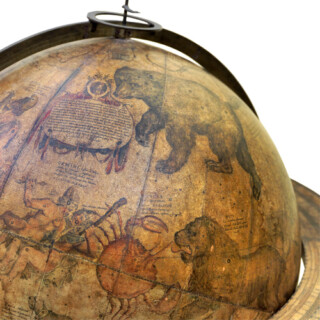A Map of Hindoostan, from the Latest authorities 1811.
[Glasgow],
1811
Engraving on linen, inset of Sri Lanka, a few minor losses to border.
595 by 660mm (23.5 by 26 inches).
13945
notes:
An unrecorded Georgian map of India, extolling the benefits of the trade and cultural links between England and India.
The map is based on John Cary's 'A New Map of Hindoostan, from the Latest Authorities', published in his 'Universal Atlas' of 1806. The mapshows territorial boundaries, towns, roads, and rivers; however, unlike Cary's map, the present example is surrounded by an elaborate border.
To each corner are portraits of four leading British an...
The map is based on John Cary's 'A New Map of Hindoostan, from the Latest Authorities', published in his 'Universal Atlas' of 1806. The mapshows territorial boundaries, towns, roads, and rivers; however, unlike Cary's map, the present example is surrounded by an elaborate border.
To each corner are portraits of four leading British an...
bibliography:
provenance:







![GRAY, R[obert] A Map of Hindoostan, from the Latest authorities 1811.](https://i0.wp.com/crouchrarebooks.com/wp-content/uploads/2025/03/13945_1H.jpg?fit=1700%2C1534&ssl=1)
